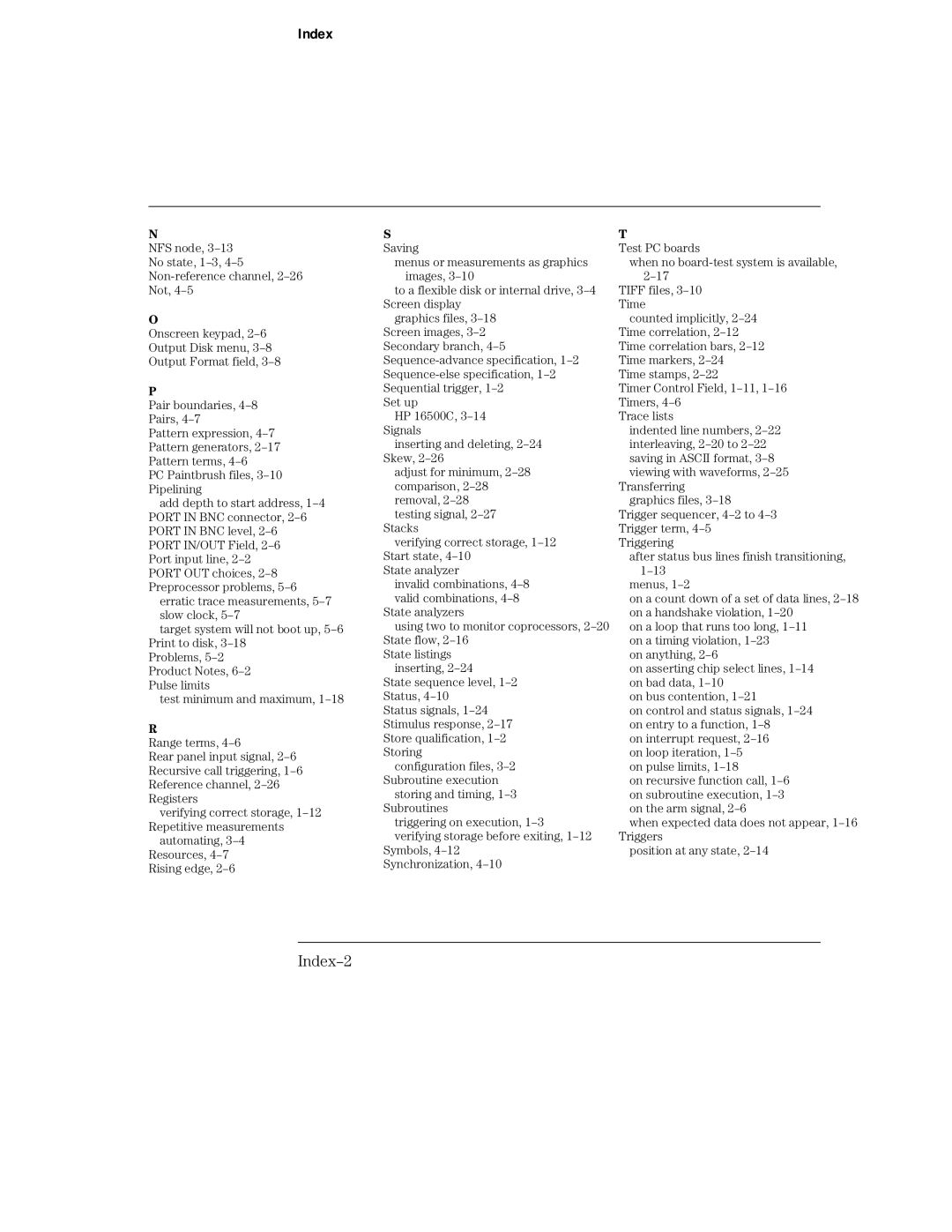
Index
N
NFS node,
O
Onscreen keypad,
Output Disk menu,
Output Format field,
P
Pair boundaries,
Pattern expression,
PC Paintbrush files,
add depth to start address,
Port input line,
erratic trace measurements,
target system will not boot up,
Problems,
test minimum and maximum,
R
Range terms,
Rear panel input signal,
verifying correct storage,
automating,
S Saving
menus or measurements as graphics images,
to a flexible disk or internal drive,
graphics files,
Set up
HP 16500C,
inserting and deleting,
adjust for minimum,
testing signal,
verifying correct storage,
State analyzer
invalid combinations,
State analyzers
using two to monitor coprocessors,
State listings inserting,
State sequence level, 1–2 Status, 4–10
Status signals,
configuration files,
storing and timing, 1–3 Subroutines
triggering on execution,
Symbols,
T
Test PC boards
when no
TIFF files,
counted implicitly,
Timer Control Field,
Trace lists
indented line numbers,
Transferring graphics files,
Trigger sequencer,
after status bus lines finish transitioning,
menus,
on a count down of a set of data lines,
on a loop that runs too long,
on anything,
on asserting chip select lines,
on bus contention,
on control and status signals,
on interrupt request,
on pulse limits,
on recursive function call,
when expected data does not appear,
position at any state,
